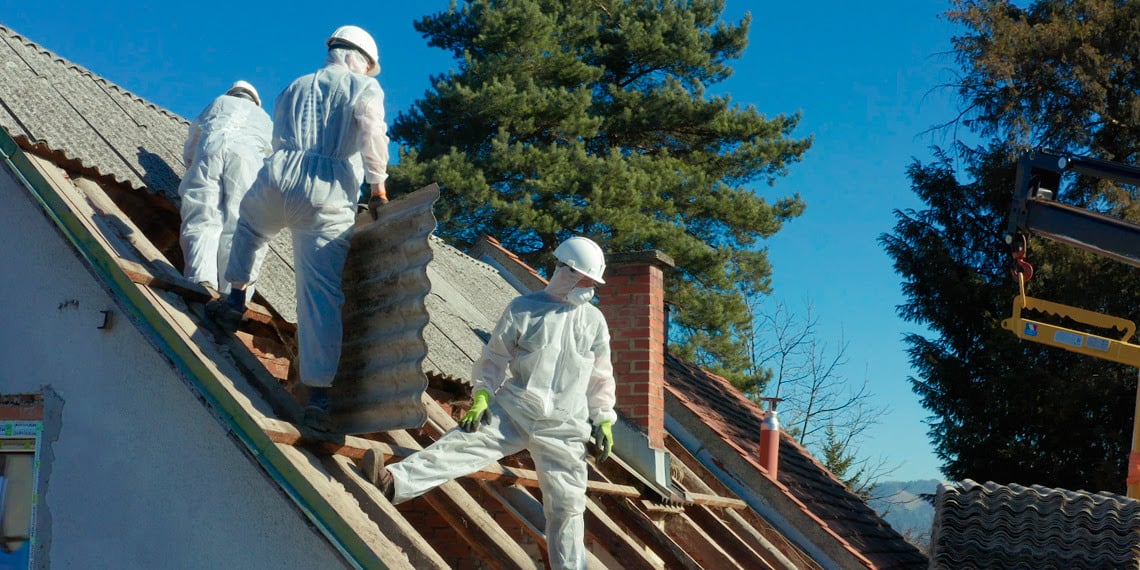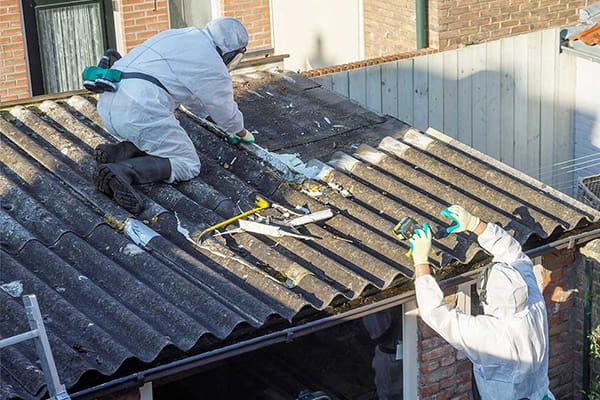Factors Influencing Asbestos Roof Removal Costs Find A Licensed Asbestos Removalist
Asbestos management plans are important tools for the safe dealing with and management of asbestos materials in various environments. With the health risks related to asbestos exposure, including lung disease and different serious respiratory circumstances, having a comprehensive management plan is important for any facility which will comprise asbestos.
The creation of asbestos management plans includes a radical assessment of the premises where asbestos may be present. This contains identifying the forms of materials that contain asbestos and evaluating their situation. Regular inspections are needed because the integrity of asbestos-containing materials can degrade over time, elevating the risk of airborne asbestos fibers.

Once the assessment is carried out, the plan should include clear procedures for managing asbestos safely. This contains guidelines on the way to deal with, preserve, and, if necessary, take away asbestos-containing materials. Proper labeling and signage are additionally important to make certain that workers and guests are aware of areas that will pose a risk.
Benefits Of Asbestos Roof Removal Removal & Replacement Of Roof Asbestos
Training and education play a big function in the successful implementation of asbestos management plans. Employees who might come into contact with asbestos must be educated in regards to the hazards, safe work practices, and emergency procedures. Regular training sessions might help maintain safety on the forefront of office tradition.
The management plan ought to outline specific responsibilities for staff and management. Designating an asbestos coordinator can streamline the process of monitoring, reporting, and speaking about asbestos-related points. This particular person serves as a degree of contact for questions and considerations relating to asbestos safety.
Documentation is a key side of asbestos management plans. Maintaining correct records of inspections, incidents, training, and maintenance activities is important for accountability and ongoing risk assessment. This documentation can also show invaluable in case of regulatory inspections or legal inquiries.
Post Asbestos Roof Removal Cleaning What To Do If You Find Asbestos
In addition to figuring out materials and implementing safe dealing with practices, the plan should define response protocols for asbestos-related emergencies. Cost-Effective Strategies For Asbestos Removal. These protocols should include measures to comply with within the event of a fabric breach or suspected fiber launch. Providing clear steps may help mitigate risks and guarantee swift motion
Periodic evaluation and updating of the asbestos management plan are very important to mirror any adjustments in regulations, workplace conditions, or materials current. Continuous improvement is essential to adapt to new info or applied sciences associated to asbestos safety. Stakeholders should be involved on this process to make sure that the plan remains relevant and effective.
Importance Of Documentation In Asbestos Projects Removal And Disposal Of Asbestos
Compliance with native and nationwide regulations regarding asbestos is non-negotiable. Organizations must stay informed about relevant legal guidelines and guidelines that govern asbestos handling and disposal. This helps avoid legal penalties and enhances the overall safety culture within the group.
Community awareness is one other essential factor in effective asbestos management plans. Engaging with native authorities, health agencies, and the community can foster a greater understanding of asbestos-related points. This collaboration ensures that each one events are informed about potential risks and safety measures in place.
Asbestos management plans don't operate in isolation; they're a part of a broader health and safety strategy. By prioritizing the well-being of workers and the encircling community, organizations can contribute to a safer environment. The integration of asbestos management with different safety protocols allows for a holistic strategy to workplace safety.
Regulatory Updates For Asbestos Roof Removal How To Get Your Roof Replaced For Under 1000
The aim of an asbestos management plan isn't just compliance but in addition proactive risk management. By successfully figuring out hazards and implementing mitigation strategies, organizations can significantly scale back the chance of asbestos exposure. This commitment to safety ultimately protects each staff and the bottom line.
Effective communication in regards to the asbestos management plan is essential for fostering a culture of safety. Clear dissemination of data ensures that everybody understands the risks and the measures in place to mitigate them. Providing transparent reporting channels encourages workers to voice considerations and contribute to safety efforts.
Finally, the importance of periodic monitoring can't be overstated. Regular audits of the asbestos management plan assist identify areas for improvement and confirm that safety measures are followed. Continuous analysis creates a feedback loop, selling a safer working environment.
In summary, asbestos management plans function crucial frameworks for controlling and managing the risks associated with asbestos exposure. Through thorough assessment, effective communication, ongoing training, and common updates, organizations can create safe environments for their employees and the community. The focus should always be on proactive measures, compliance with regulations, and a powerful safety culture.
Legal Requirements For Asbestos Removal In Nsw Cost Guide For Asbestos Removal
By guaranteeing that every aspect of the plan is well-executed, organizations can significantly lower the risks tied to asbestos materials. This ongoing dedication to safety is not going to only protect people but also enhance organizational status and belief.
Continuous adaptation and refinement of asbestos management plans will finally result in a extra knowledgeable workforce that prioritizes safety above all. Such a culture is important for attaining long-term safety objectives and ensuring the health of all stakeholders involved.
Long-Term Effects Of Asbestos Roof Removal Best & Cheap Removal Services Available
Ultimately, the well-being of staff and the environment should guide the event and implementation of any asbestos management strategy. By remaining vigilant and diligent of their strategy, organizations can navigate the complexities of asbestos management effectively.
In conclusion, the roadmap for asbestos safety is challenging but important. A carefully crafted and executed asbestos management plan, complete with thorough assessments, communication protocols, and ongoing education, lays the groundwork for a secure and compliant office. This proactive method fosters a protective environment for all these involved, solidifying the commitment to safety for the long run.
- Asbestos management plans outline protocols for identification, assessment, and management of asbestos-containing materials in various settings, particularly in buildings.
- Regular inspections and risk assessments are important elements of an asbestos management plan, ensuring ongoing monitoring and updated info relating to potential hazards.
- Training for personnel on asbestos awareness and safety measures is important, guaranteeing that workers are knowledgeable about the risks and procedures associated to asbestos exposure.
- Development and maintenance of an inventory of asbestos areas, sorts, and circumstances allow for informed decision-making when planning renovations or demolitions.
- Emergency response procedures tailor-made for asbestos-related incidents assist minimize health risks throughout sudden situations involving asbestos disturbance.
- Effective communication strategies inside a corporation inform all stakeholders of asbestos management plans, highlighting obligations and inspiring a tradition of safety.
- Documentation of all asbestos-related activities, together with removal, encapsulation, or repair, is important for compliance with regulatory standards and for future reference.
- Stakeholder engagement, together with occupants and neighboring properties, is significant to lift awareness and handle considerations concerning asbestos management and safety practices.
- Integrating asbestos management plans with general health and safety policies can create a cohesive approach to workplace safety and environmental health.
- Regular reviews and updates of the asbestos management plan ensure relevance and effectiveness, adapting to any adjustments in regulations, building occupancy, or material condition.undefinedWhat are asbestos management plans?
Asbestos Roof Removal Services In Sydney Find A Licensed Asbestos Removalist

Asbestos management plans are paperwork that define how to manage asbestos on a property. They detail the location, situation, and forms of asbestos-containing materials, together with methods for safe monitoring, maintenance, and mitigation.
Why do I need an asbestos management plan?
An asbestos management plan is crucial for protecting health and safety. It ensures that all potential asbestos hazards are identified and managed appropriately, minimizing the risk of exposure to individuals on the property.
Cost-Effective Strategies For Asbestos Removal Find A Licensed Asbestos Removalist
Who is liable for creating an asbestos management plan?
Typically, the property proprietor or employer is answerable for creating and implementing an asbestos management plan. It is commonly really helpful to seek the advice of with qualified professionals or licensed asbestos surveyors to make sure compliance with regulations.

How often ought to my asbestos management plan be reviewed? Regulatory Updates For Asbestos Roof Removal.
Monitoring And Maintaining Safety Standards Residential Asbestos Removal Services
Asbestos management plans must be reviewed at least every 12 months or every time significant adjustments occur on the property, such as renovations or damage to areas containing asbestos. This ensures that the plan remains up-to-date and effective.
What should I do if my asbestos management plan identifies risks?
If risks are identified, immediate action ought to be taken according to the plan. This may embrace repair, encapsulation, or removal of asbestos materials by licensed professionals, along with notifying affected people in regards to the risks and safety measures.
Can I manage asbestos issues myself with no plan?
Risk Communication Regarding Asbestos Removal Testing, Removal & Disposal Of Asbestos
It is not advisable to administer asbestos issues without a formal plan. Improper handling can result in severe health risks and legal consequences. Consulting a certified professional is important for safety and compliance with regulations.
How do I find a certified professional for my asbestos management plan?
To find a certified professional, look for licensed asbestos consultants or surveyors in your space. It is necessary to ascertain their certifications, expertise, and evaluations to make sure they meet regulatory requirements and have an excellent observe document of safety.
Safety Training For Asbestos Roof Removal Workers Hazardous Materials & Disposal Services
What happens if I don’t have an asbestos management plan?
Lack of an asbestos management plan can result in non-compliance with local regulations, leading to heavy fines, legal liability, and increased health risks for occupants. It is crucial to have an efficient plan in place to manage asbestos safely.
Is training required for those dealing with asbestos management plans?
Yes, people involved in managing asbestos should obtain applicable training. This contains understanding the risks, the specifics of the management plan, and safe work practices. Regular training ensures everybody is prepared to respond to potential asbestos issues successfully.
her response read this